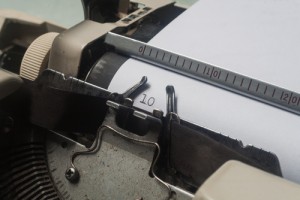Press release writing and distribution part three: structuring your news release
OK – you can finally start writing now.
You’ve thought about your audience and the media outlets (publications, radio and TV programmes, websites, blogs) that serve it, you’ve identified your story and you’ve gathered your facts and quotes. You may be wondering by now why this post is called ‘Press release writing’ when it should be ‘Press release building’. Well, if it had been called the latter you may not have read it. There’s a lesson there somewhere.
Anyway, now’s the time to fire up your computer and start writing. But where do you start? Your mind is probably swimming with facts, quotes and images of your reader. It’s a confusing time.
Fortunately most journalism, and therefore press release writing, is very formulaic. The first thing to do is to think about all the facts you’ve collected and choose the ‘best bit’. Yes, I know that doesn’t sound very scientific, but what I mean by the best bit is the most unexpected bit, the most newsworthy bit. Put another way, the juiciest bit of the story. This will form the basis of your headline and your first paragraph. You can write the headline now, if you like, or you can write it when you’ve finished the release. More about the headline later.
Your first paragraph should include the best bit of the story and be grammatically correct (I don’t know why but many people write the first paragraph in headline style – avoid this tendency if it creeps up on you).
The second paragraph should be on a new line and include the next best bit of the story. Take note – the press release, like any news story in the media, does not follow a chronological order. Instead it starts with the best bit, then the next best bit and so on. This means you’re more likely to catch the attention of the journalist (this is obviously critically important) and they can stop reading whenever they like without missing the best bits of the story. Bear in mind journalists are exposed to potentially hundreds or thousands of releases every week (the national press get hundreds every day), so unless you can grab their attention in a few seconds your release will be filed in the bin.
Three or more paragraphs down is where your quote from your spokesperson should be. This should be colourful, but not too long and flowery. Try to use real language – the way people speak, but without introducing grammatical errors.
Further down the release should be the detail. Answer any of the who, what, where, when and why questions that you haven’t in the first few paragraphs.
A note on style – you’re not trying to win a Pulitzer Prize when you write a press release. It’s about communicating effectively and efficiently, not about showing off with language. Don’t use a complex, pompous word when a simple one will do. You may think ‘clever’ language will sound better, but nothing is more likely to put a journalist off. And avoid all temptation to ‘puff’ your story with superlatives or hyperbole. Journalists either laugh or cringe every time they see the word phrase “the world’s leading…”.
A note on length – press releases do not need to be long. If you have all the facts in there and one or two juicy quotes and it only runs to 300 words then that’s all you need. One way to keep your release short is to keep your sentences short. In any case, longer sentences are very hard to understand.
Right at the end of your release is one of the most important components. This is where you put your contact details. You need to put your name, your company name, your phone number and your email address. If you’re really keen put your mobile number here too – many publications and broadcast organisations work odd hours, late into the night or weekends, and you don’t want to miss an opportunity just because a researcher on a radio programme couldn’t call you to check a fact before they went on air.
If your story involves a third party – as in the case of two companies doing something newsworthy together – then include their contact details too. In these kinds of stories it is critical that you get the other organisation to agree the press release before you send it to anyone.
Once you’ve written your release read it through. This may sound obvious but it’s amazing how many releases we see submitted to the ResponseSource Press Release Wire that contain spelling, grammatical and factual errors. Get someone else to check it too (chances are your boss will want to read it anyway, but they won’t necessarily be good proof-readers).
There is no absolute need to have pictures available, but it can help as sometimes the availability of a good picture could mean the difference between getting coverage or not. Do not email pictures (or any attachments for that matter) to journalists unless they ask for them – if pictures are available simply make sure you mention this in the release. Online press release wires sometimes allow you to attach pictures that are easily downloadable by journalists. This is very worthwhile as it can attract attention to the release as well as informing the media that a picture is available.
Go to the next in the series: Press release writing and distribution part four: formatting your press release
Check out all the posts in our full blog series on press release writing and distribution
